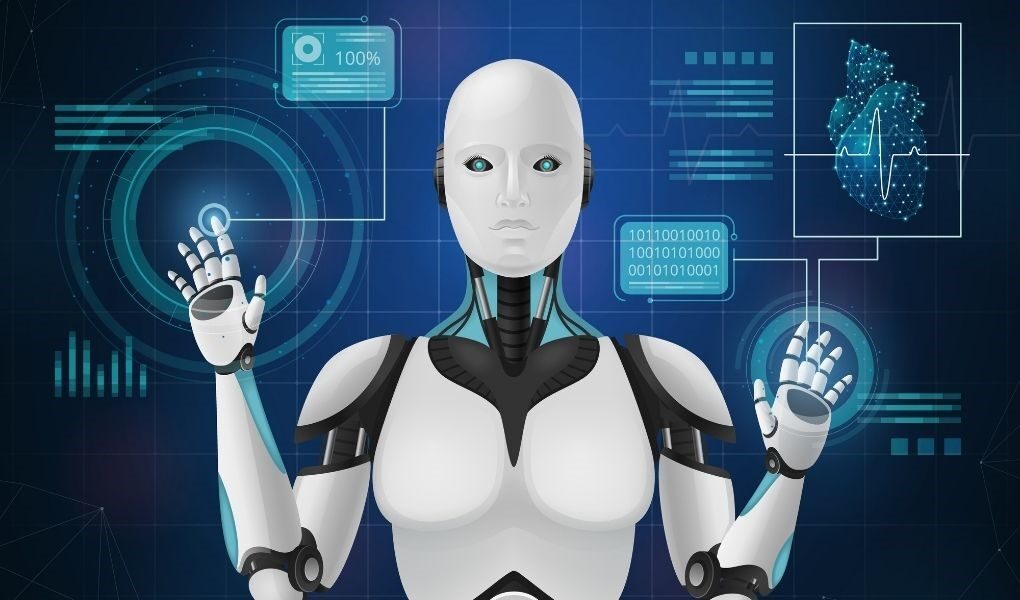Artificial intelligence: Hardly any other term is hyped as much as this in the world of marketing. But if we’re honest, the thought of artificial intelligence either raises more questions than answers or secretly blurs with the science fiction scenarios that Hollywood has entertained us with for several years.
Therefore, with this article, we want to get closer to the reality of artificial intelligence. After all, what exactly are we talking about when we talk about AI? Does artificial intelligence bring the promised revolution in (e-mail) marketing and what specific application examples could look like? And when will this ominous future occur, which everyone is talking about in this context?
Table of Contents
What Exactly Do We Mean By Artificial Intelligence?
For most of us, artificial intelligence still sounds pretty abstract and surreal. At best, we might think of robots that are about to usurp world domination.
But creating intelligent machines is certainly not a new invention from Hollywood. Old myths like that of the golem tell of the creation of an intelligent, self-thinking machine, and Leonardo da Vinci also made the first drafts.
Today, in the age of digitization, we are so far advanced that mechanical processes that were previously carried out by humans are now carried out by machines. But that’s not all! Today it is possible to digitally map mental processes – thanks to high-performance computers even in fractions of a second.
To be more specific: Artificial intelligence is not only capable of analyzing and evaluating large and complex amounts of data, but also of learning from them and gaining experience. Examples of current achievements in the field of artificial intelligence are the victories that programs such as Deep Mind, IBM’s Watson, or Google’s AlphaGo have achieved in various strategy games.
But how can these technical achievements be applied to (e-mail) marketing and what specific application examples could look like?
Artificial Intelligence In Marketing
In marketing, we already know how algorithms work that analyzes and evaluate user behavior. These analyze collected data, identify trends, user behavior, engagement, and metadata. These processes become more understandable if we take a look at the popular Instagram algorithm, for example. The Instagram algorithm determines which postings are displayed to users in the feed. Many factors play a role: The algorithm analyzes, among other things
- The thematic interests of the users
- Which profiles the users visit frequently
- The commitment of the community to the individual postings
- The metadata (actuality) of an image
- And includes recently asked searches.
From these factors, Instagram users create a personal and individually compiled feed that is based on the latest data at all times.
At this point, we are not talking about artificial intelligence, but these algorithms are its basis. This becomes clear in the specific application of the Google RankBrain: The RankBrain is based on machine learning, a sub-area of artificial intelligence.
Similar to Instagram, but much more complex, Google analyzes search queries. That much is clear. The RankBrain, however, derives from the search and surfing behavior of a user what he could have GEMEINT individually with his search query.
So instead of just analyzing individual words, the RankBrain tries to understand the search query based on the “experience” it has gathered with the user. The RankBrain also creates semantic relationships in addition to the analyzes.
For example, if a user frequently Googles music from the 1970s and searches for “rain in California” at some point, no weather data but search results for Albert Hammond’s song “It never rains in Southern California” would be displayed.
RankBrain would have “understood” that the user is looking for the lyrics and does not want to inquire about the weather in California. At this point, we are (tentatively) talking about artificial intelligence.
What Artificial Intelligence Could Do In Email Marketing
But how could this technology be used in email marketing in the future? The only limit is our imagination. Nevertheless, we have come up with an example for you:
A Revolutionized Customer Experience
Let’s imagine that you are the operator of an online shop for outdoor clothing and are promoting a new collection of headwear from a certain brand – in this case, three different beanies, each in three different colors. All well and good, but what color and hat shape suits your subscribers preferably?
Instead of presenting the products in pictures as before and, ideally, adding a discount code, your subscribers can virtually try on their hats in the email. A quick upload of a photo directly into the e-mail and users can click through the different hat models and test them on themselves.
What seems like a simple copy-paste process at this point is much more than that: an AI calculates the perfect position of the hat in the background, so it doesn’t matter from which perspective the picture was taken. The hat always sits perfectly on the head.
Behind this is a so-called deep learning process that repeats the activity – i.e. the merging of the head with cap – until the gain in knowledge brings the same results as a professional graphic artist would. The software recognizes the inclination of the face, head shape, hair, and size of the forehead and adapts the hat perfectly to the individual photos.
If thanks to other technologies such as AMP, the e-mail also functions as its landing page, artificial intelligence turns it into a virtual changing room including a cash register system. Conversely, this would also mean that not only the customer journey would significantly shorten the entire online decision process.
Instead of directing subscribers from the email to the landing page and perhaps further to the online shop, as was previously the case, all activities would still take place in the email itself, thereby significantly reducing today’s common abandonment rates.
The Intelligent Continuation Of CRM
Do you already have your email of the future in mind? It gets even better! Because not only the e-mail itself will change through the implementation of artificial intelligence: Customer relationship management will also reach completely new spheres! While we have been with lead management and marketing automation so farDo everything possible to make the dialogue with the customer as personalized and individualized as possible, could soon support chatbots in the future.
However, we do not mean the type of chatbot that causes the user to roll annoyed with the first sentence because standardized “robot sentences” appear in the response, but chatbots that can mimic human-like communication using artificial intelligence. If you were to integrate a chatbot of this type into your e-mail, customer inquiries could be answered exactly where their interest is through your newsletter has just been awakened.
The chatbot would of course no longer appear in the form of a colorful, annoying pop-up window, but would reply in seconds in the form of the usual e-mail communications. The effect would be enormous: subscribers would be suggested absolute priority and relevance, and customer loyalty would be increased accordingly.
Thanks to deep learning technology, users would ideally no longer be able to distinguish whether they are communicating with a bot or a customer service. Even more: the distinction would no longer play a role if the result is the same.
As a result, completely new resources would be available to you and you would no longer have to go to customer service for every single customer inquiry.
Intelligent Evaluation Through AI Augmentation
In retrospect, artificial intelligence would also support you in evaluating your mailings in a way that was previously not possible for you. In this context, however, it is by no means about replacing the human workplace, but rather bringing together the performance of humans and AI.
So-called augmentation applications can support your marketing team, for example, in evaluating the success of marketing measures and generating customer insights. In this way, your marketers could completely new connections between individual marketing measures and the reactions of the recipients that were previously hidden from the human eye.
For example, the services of an AI can be used to identify which component of a subject line, a call-to-action, or a text led to success. After all, these are the questions that we find difficult to answer today: Was the mailing so successful because of the subject line? And if so: is the success due to the wording or emojis used? Or was it the positioning of the call-to-action that ensured the high conversion rate !?
Nice And Good. But When Exactly Does This Ominous Future Of Artificial Intelligence In Email Marketing Begin?
In short: the most hyped topics are the least relevant for companies. It is the same with artificial intelligence. Technologies that are as hotly debated as these are mostly still in research or at least in test phases and are rarely ready for daily practice. A look at the current Gartner Hype Cycle for Digital Marketing and Advertising 2019 confirms the thesis.
Artificial intelligence is currently at the height of the hype. Gartner predicts a period of five to ten years before Artificial Intelligence reaches a level of development that can be used in the daily business of marketers.
Also Read: How To use Transactional Emails For Your marketing
.



